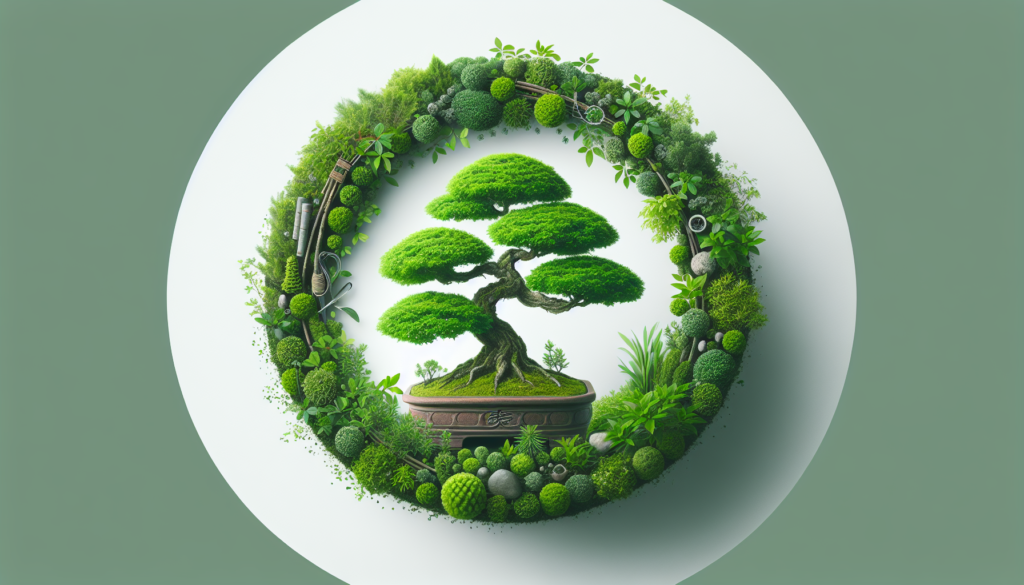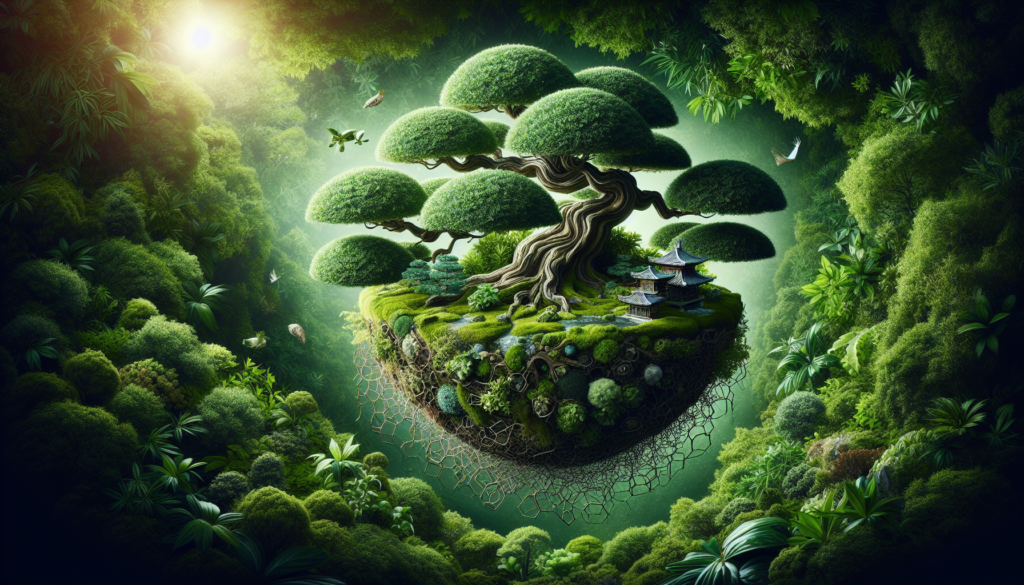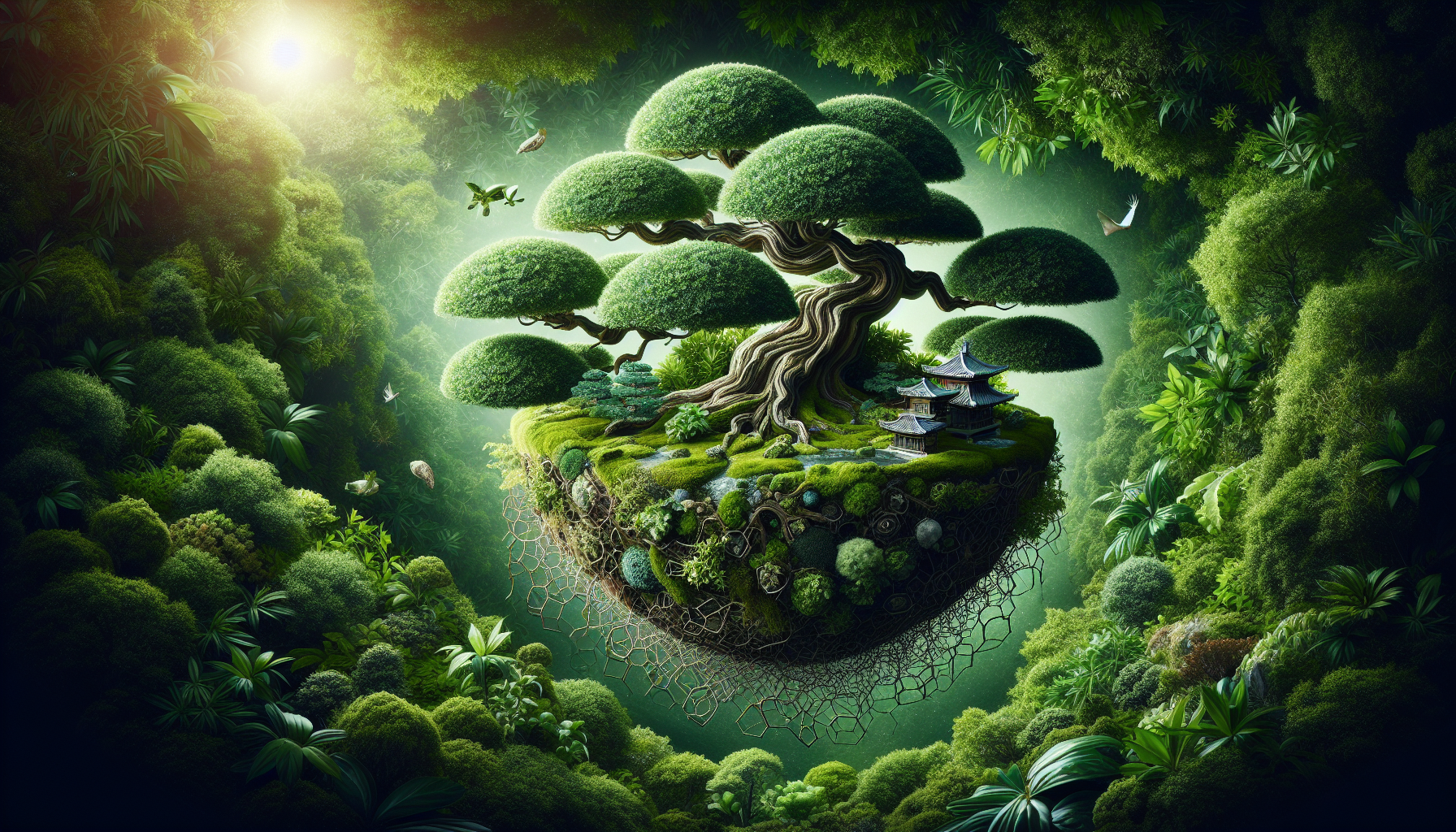Are you a bonsai enthusiast looking for ways to make your practice more eco-friendly? Look no further! In this article, we will explore ten simple yet effective ways to implement eco-friendly practices in your bonsai hobby. From choosing sustainable pots to using organic fertilizers, these tips will not only help you reduce your environmental impact but also enhance the health and beauty of your bonsai collection. So, let’s get started on our journey to a greener and more sustainable bonsai practice!
The Importance of Eco-Friendly Bonsai Practices
Bonsai cultivation is not only a hobby but also an art form that allows individuals to showcase the beauty of nature in miniature form. However, it is crucial to understand the impact our bonsai practices can have on the environment. By adopting eco-friendly habits, you can play a vital role in reducing your ecological footprint and preserving the natural world around us. In this article, we will explore the significance of eco-friendly bonsai practices and discuss various ways you can incorporate sustainability into your bonsai cultivation journey.
Understanding the ecological footprint of conventional practices
Conventional bonsai practices often involve the use of synthetic fertilizers and pesticides, which can have detrimental effects on the environment. These substances contain harmful chemicals that can seep into the soil and groundwater, contaminating the ecosystem. Additionally, traditional practices may contribute to excessive water consumption and waste generation. By understanding the ecological footprint of these practices, we can recognize the need for more sustainable alternatives.
The benefits of incorporating eco-friendly habits
Incorporating eco-friendly habits into your bonsai cultivation not only helps the environment but also offers numerous benefits for your trees. By reducing the use of synthetic fertilizers and pesticides, you can create a healthier and more balanced ecosystem. Eco-friendly practices can improve the overall soil quality, enhance biodiversity, and promote the growth of beneficial microorganisms. Furthermore, adopting sustainable practices can result in healthier and more vibrant bonsai trees, as well as a sense of fulfillment for contributing to the well-being of the planet.
Choosing Eco-Friendly Bonsai Varieties
Identifying bonsai species that are more resilient and require fewer resources
When selecting bonsai varieties, it is essential to consider their sustainability and resource requirements. Certain bonsai species are more resilient, requiring less water, sunlight, and maintenance. Opting for these varieties can help minimize your environmental impact without compromising the beauty of your bonsai collection. Some resilient bonsai species include Junipers, Pines, and Chinese Elms. By choosing these varieties, you can ensure a successful and eco-friendly bonsai cultivation experience.
The advantage of native species in different climates
Another crucial aspect of eco-friendly bonsai practices is the preference for native species in different climates. Native species are well-adapted to the local environment, making them naturally more resistant to pests and diseases. Furthermore, these species are often better suited to the local climate, reducing the need for excessive watering, fertilizing, and other resource-intensive practices. By selecting native bonsai species, you can create a sustainable and thriving bonsai collection that harmonizes with the natural ecosystem.

Conserving Water in Bonsai Cultivation
Effective water management practices
Water conservation plays a significant role in eco-friendly bonsai practices. Implementing effective water management practices can help minimize water waste and promote sustainability. One of the essential techniques is proper watering. By learning to water your bonsai trees correctly, you ensure that they receive adequate moisture while avoiding overwatering, which can lead to root rot and other issues. Additionally, using techniques such as drip irrigation or sub-irrigation can further optimize water usage, minimizing runoff and evaporation.
Influence of pot choice and soil composition on water consumption
The choice of pots and soil composition also influences water consumption in bonsai cultivation. Selecting pots with adequate drainage holes allows excess water to drain freely, preventing waterlogging and potential damage to the trees. Additionally, using well-draining soil mixes, such as those containing organic matter and inorganic components, helps retain moisture while allowing proper aeration. By considering these factors, you can create a balanced water environment that promotes the health and sustainability of your bonsai trees.
Organic Fertilizers For Bonsai
The environmental and health benefits of organic fertilizers
Organic fertilizers offer numerous benefits for both the environment and the health of your bonsai trees. Unlike synthetic fertilizers, organic alternatives are derived from natural sources and contain essential nutrients in their most natural forms. This promotes a slow-release mechanism, ensuring a steady supply of nutrients to the trees over time. Organic fertilizers also enrich the soil, improve soil structure, and encourage the growth of beneficial microorganisms. By using organic fertilizers, you contribute to a healthier and more sustainable growing environment.
How to make your own organic bonsai fertilizers
Making your own organic bonsai fertilizers is a cost-effective and eco-friendly way to nourish your trees. Compost, for example, is an excellent source of organic matter that can be easily created by recycling kitchen waste and plant trimmings. You can create a compost pile or use a compost bin to decompose organic matter into nutrient-rich compost. Additionally, natural ingredients such as seaweed extract, bone meal, and coffee grounds can be used to make homemade organic fertilizers. These alternatives are not only sustainable but also allow you to have full control over the ingredients used in your bonsai care routine.

Pruning and Shaping Bonsai Trees Responsibly
The impact of excessive pruning
Pruning is a fundamental aspect of bonsai cultivation, allowing you to maintain the desired shape and size of your trees. However, excessive pruning can have detrimental effects on the health and sustainability of your bonsai. Over-pruning can weaken the trees, making them more susceptible to diseases and pests. It is crucial to strike a balance between shaping your bonsai and respecting the natural growth patterns of the tree. By pruning responsibly, you can create an aesthetically pleasing bonsai while promoting the overall well-being of the tree.
Environmentally-friendly shaping techniques
Utilizing environmentally-friendly shaping techniques can further enhance the sustainability of your bonsai practices. Instead of using wire to shape your trees, consider utilizing natural methods such as clip-and-grow or directional pruning. These techniques allow the tree to grow and develop naturally, minimizing the need for excessive intervention. Additionally, embracing the concept of “less is more” can help create a more organic and harmonious bonsai shape. By adopting these shaping techniques, you can preserve the intrinsic beauty and sustainability of your bonsai trees.
Smart Energy Choices in Indoor Bonsai Cultivation
Utilizing natural light as much as possible
Indoor bonsai cultivation requires a careful balance of natural and artificial light to ensure optimal growth and health. Whenever possible, prioritize natural light sources by placing your bonsai trees near windows or in well-lit areas of your home. Natural sunlight provides a full spectrum of light that benefits the trees’ photosynthesis and overall vitality. By utilizing natural light, you reduce your reliance on artificial lighting, conserving energy and promoting eco-friendliness.
Optimizing artificial lighting setup with energy-saving technologies
When artificial lighting is necessary for indoor bonsai cultivation, it is essential to make smart energy choices and optimize your lighting setup. LED grow lights are a popular choice for indoor bonsai cultivation due to their energy efficiency and full-spectrum capabilities. LEDs consume less energy, produce less heat, and have a longer lifespan compared to traditional lighting options. Additionally, using timers to control the lighting schedule can further conserve energy by ensuring that the lights are only active when needed. By implementing these energy-saving technologies, you can create an eco-friendly indoor bonsai cultivation environment.
Selecting Eco-Friendly Bonsai Pots
The environmental impact of different pot materials
The choice of bonsai pots can significantly impact the environment, as certain materials have a more significant ecological footprint than others. Ceramic pots, for example, are durable and aesthetically pleasing but often require a significant amount of energy to manufacture. Plastic pots, on the other hand, are lightweight and cost-effective but contribute to plastic waste pollution. By being mindful of the environmental impact, you can make eco-friendly choices when selecting bonsai pots.
Suggestions for eco-friendly pot alternatives
To enhance the eco-friendliness of your bonsai cultivation, consider using eco-friendly pot alternatives. Natural materials such as terracotta or wood can be viable options, as they are biodegradable and have a lower environmental impact. Terracotta pots are breathable, allowing for proper air circulation and moisture control, while wooden containers create a more natural and organic aesthetic. Additionally, using recycled or upcycled containers, such as old tin cans or repurposed ceramic pots, is an excellent way to minimize waste and promote sustainability.
Creating an Eco-Friendly Bonsai Environment in Your Home
Repurposing household items for bonsai needs
Creating an eco-friendly bonsai environment goes beyond the use of sustainable materials and practices. Repurposing household items for bonsai needs is a creative and resourceful way to reduce waste and contribute to sustainability. For example, old plastic bottles can be transformed into self-watering containers, minimizing water loss and maintenance. Similarly, old utensils or tools can be repurposed for bonsai training or position adjustments. By thinking outside the box and repurposing items, you can create a more sustainable bonsai care routine.
The role of indoor plants in creating a healthier ecosystem
Incorporating indoor plants alongside your bonsai can enhance the eco-friendliness of your bonsai environment. Indoor plants help purify the air by removing harmful toxins and increasing oxygen levels. They also contribute to maintaining appropriate humidity levels, reducing the need for additional moisture in your bonsai cultivation area. By creating a healthier ecosystem within your home, you promote the well-being of both your bonsai trees and yourself.
Reducing, Reusing, and Recycling in Bonsai Care
How to reduce waste in bonsai care
Reducing waste in bonsai care involves implementing practices that minimize the generation of unnecessary waste materials. One way to achieve this is by carefully planning your bonsai projects to avoid excessive pruning or trimming that may result in significant waste. Additionally, investing in quality tools and materials ensures their longevity and reduces the need for frequent replacements. By being mindful of waste generation, you can actively contribute to a more sustainable bonsai care routine.
Creative ways to reuse and recycle bonsai materials
Bonsai care often generates materials that can be repurposed or recycled rather than being discarded. For instance, bonsai trimmings or fallen leaves can be shredded and used as a natural mulch or compost to enrich the soil in your bonsai pots. Similarly, old wire used for shaping can be collected and reused for future bonsai projects. By exploring creative ways to reuse and recycle bonsai materials, you minimize waste and embrace sustainability in your bonsai journey.
Eco-Friendly Pest Control for Bonsai Trees
Why traditional pesticides can be harmful
The use of traditional pesticides in bonsai care can have adverse effects on the environment, including potential harm to beneficial insects, birds, and other animals. These pesticides often contain harmful chemicals that can leach into the soil and water, disrupting the natural balance of the ecosystem. Additionally, excessive use of pesticides can lead to the development of resistant pest populations, requiring stronger and more harmful chemicals over time. It is crucial to explore eco-friendly alternatives to pest control.
Natural and eco-friendly pest control alternatives for bonsai care
Fortunately, there are numerous natural and eco-friendly pest control alternatives for bonsai care. For example, introducing beneficial insects such as ladybugs or lacewings to your bonsai environment can help control common pests naturally. Alternatively, natural remedies such as neem oil, insecticidal soaps, or homemade vinegar sprays can be effective against certain pests without harming the environment. By embracing these natural pest control alternatives, you can ensure the health and sustainability of your bonsai trees while minimizing the use of harmful chemicals.
In conclusion, incorporating eco-friendly practices into your bonsai cultivation journey is not only beneficial for the environment but also for the overall health and sustainability of your bonsai trees. By making conscious choices in bonsai variety selection, water management, fertilizer usage, pruning techniques, energy optimization, pot selection, and waste reduction, you can actively contribute to a greener and more sustainable future. Adopting these eco-friendly habits not only enhances the beauty of your bonsai collection but also ensures its harmony with nature. Start implementing eco-friendly bonsai practices today and be a responsible steward of the environment!








